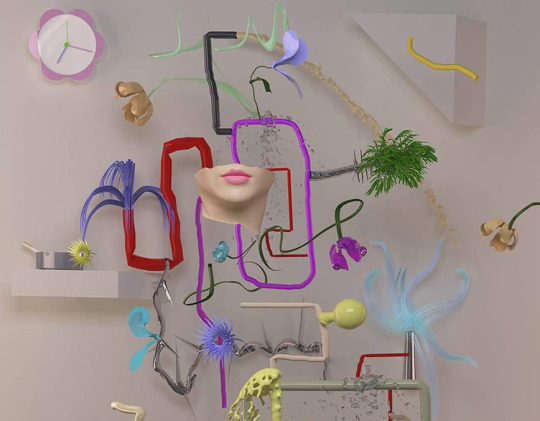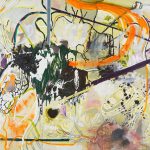COVID-19 | Presenting Your Work Online
Artist and producer Jason Wyman helps you navigate ways of digitally connecting with your target audience.
Over the last five years, artist and producer Jason Wyman has convened a diverse, intergenerational network of youth media artists in virtual spaces of co-creation and exchange.
Stemming from their mentorship in NYFA’s Immigrant Artist Mentoring Program (IAP): Oakland, Wyman has also co-designed a series of video roundtables to connect NYFA’s national network of immigrant artists to each other through inquiry, storytelling, and skill and resource-sharing in partnership with IAP mentee Rupy C. Tut. Developed prior to the COVID-19 pandemic, these online spaces have responded to the growing critical needs of immigrant artists across the country.
Before engaging with technology, Wyman advises that you ask yourself: Why am I convening people (virtually)? The artist states that they convene people because they “want them to feel loved and included. That’s it. Everything else is designed around those two wants.”
Keep this in mind as you read the below Q&A, with tips from Wyman on how to use video platforms to share and discuss work, home equipment recommendations, and technical trouble-shooting advice.
NYFA: For those who are brand new to using video platforms to share their work and interact with their audience, can you give a brief overview on which platforms work best?
Jason Wyman: First, ask yourself: Why am I sharing what I think I want to share? Really interrogate that answer. If presenting your art is what you want to do, think about how you want that work presented and where your audience may be. Yes, Zoom may work for you. But! An “Ask Me Anything [about This One Piece of Art]” on Reddit, Facebook, Instagram, or Twitter might be a better option if your audience is already on one of those platforms. If you want to perform music, then livestreaming on Instagram/Facebook, YouTube, or Twitch may be the way to go. If you’re teaching an art class, Zoom is a good tool but consider that the place you teach may have a technology they require (e.g. some school districts only let folx communicate through Google Meet).
NYFA: How can artists of all disciplines make the best use of the equipment that they may already have on hand?
JW: The first step is to take inventory of all of the technologies you have access to. Do you have a computer? How about a smartphone? Or a tablet? Maybe you have a microphone with an audio board that plugs into your computer or an easel that could be used as a tripod. List everything out.
Additionally, list out all the ways you get online. This includes your internet and your cell phone coverage and even your landline. Notice what connections are stronger than others. For example, if you don’t have a strong internet connection, streaming video may not be the best option. Phone calls and conference call lines may work better for you.
Work with what you have and tailor your choices to what is the least frustrating. Making the transition to having to present digitally or virtually can be irksome and tedious. Knowing what you can and cannot control helps you navigate the technical issues that are bound to come up.
NYFA: What are your recommendations for looking and sounding your best on an online video platform?
JW: The first step is: Don’t beat yourself up about not looking and sounding your best. We are all learning. Every single one of us. And anyone who tells you they know everything about what’s best online is lying.
Our technology, cellular, and internet infrastructure in the United States is cobbled together and highly inequitable. It’s perfectly fine to figure out what works best for you along the way and make adjustments as you go. Still, there is ONE really simple tip for video: Don’t have your light source behind you. That includes lamps and windows and doors. Just notice where your light is coming from and make sure it isn’t at your back.
NYFA: What if you encounter technical difficulties mid-stream? Do you have any suggestions for how best to handle and regain steam?
JW: Let go of all expectations of your online experience even when you’ve tested and planned and done a practice session twice because the first one failed. I guarantee you it will all utterly fail again.
EMBRACE THE FAILURE. Don’t work against it. Don’t apologize for it. Instead, name it as it is occurring. It is helpful to tell folx when their mic is off or if their video stops working. One phrase I use when I start any virtual convening is, “Just a friendly reminder that all technology fails, just like we fail. So please be kind and gracious as we navigate our failures together.”
If technology keeps failing and you are getting frustrated because you don’t know what to do, name all of it and ask for help from folx on the call. Someone watching probably already has an answer or solution.
NYFA: For artists conducting Q&As, what are your top three tips for opening things up to a larger crowd and maintaining a sense of order (and time)?
JW: If you are convening folx online where you are presenting an artwork/song/film and you then want to take questions from the audience, get someone else to help facilitate the Q&A. This could be a friend or partner. It could be another artist. It could even be a student. The key here is that you want to be able to be present to answer the questions and not have to both answer the questions and facilitate the Q&A.
For those that have to facilitate their own Q&A (or those that are facilitating for someone else), taking stack (aka keeping an order) is crucial for your Q&A to be successful. Before you begin, ask who wants to ask questions and have people raise their hands. Notice whose hand is raised and start making an order.
Zoom also has a Q&A feature where folx can type in questions to ask the host. You can use it to collect questions and start your replies from that initial list. Along the way you can open it up if not enough questions have been asked.
NYFA: Lastly, for artists who introduce live video streaming into their practices, what are some of the best ways for maintaining engagement and encouraging audience members to return for future events and programs?
JW: First, look directly into the camera and warmly welcome people. Sometimes, you can be tempted to look at the screen instead of the camera. However, eye contact still matters and helps create a sense of being seen. When you are presenting your artwork via video and you are on video yourself, looking at the camera changes the relationship between you and your audience. It makes it more personal.
Next, welcome people as they arrive. On most platforms, you can see who is tuning in when. Don’t interrupt what you are saying or doing to say hi to someone. But when there is a natural break, welcome everyone that recently joined. It also helps to mention folx by name. Any way you can make it more welcoming means your audience will feel more included.
Finally, make space for others to share their reactions and experiences. Again, how this happens is platform-dependent. If you are livestreaming on Facebook, for example, you may not have someone join your stream to share their reaction, but they may share something via comments. Thank them for responding or commenting, and then read it aloud. If you feel comfortable, share your reaction to their reaction. Create a responsive feedback loop.
-Interview Conducted by Amy Aronoff, Senior Communications Officer
About Jason Wyman:
Jason Wyman is Senior Producer at The Alliance for Media Arts + Culture’s Alliance Youth Media Network. They are an artist, writer, performer, curator, and educator who cultivates environments of peer exchange rooted in creative inquiry and multi-sensory pedagogies. They are a catholic (not capitalized) mystic conjuring ephemeral landscapes of astral and temporal origins; they are queerly complex. Wyman’s work has graced walls, stages, screens, classrooms, street corners, and museums including Asian Art Museum, Contemporary Jewish Museum, Santa Cruz Museum of Art and History, DeYoung Museum, SOMArts, the 16th Street BART Station, San Francisco Public Library, and many other venues. Find out more about Wyman’s youth media work and sign up for their e-newsletter.
If you need resources, please check our Emergency Grants page on NYFA’s website. We are updating it regularly as new funding comes in. You can find more articles on arts career topics by visiting the Business of Art section of NYFA.org. Sign up for NYFA News and receive artist resources and upcoming events straight to your inbox.
Image Detail: Katie Torn (Digital/Electronic Arts Finalist ’14), Still Life with Clock, 2012, render – ink jet on paper





